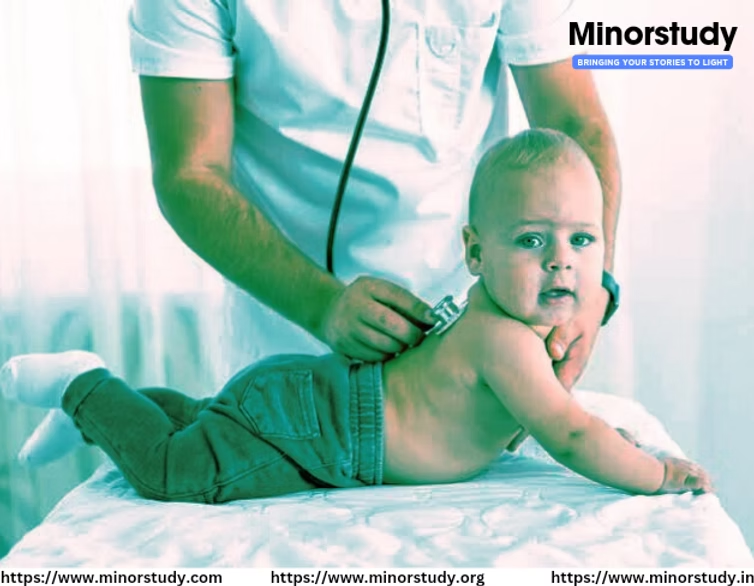Pediatrics: An Overview
Pediatrics is a branch of medicine focused on the healthcare and treatment of infants, children, and adolescents, typically from birth up to the age of 18. It encompasses physical, mental, and social health, ensuring proper growth and development during the early stages of life.
Key Areas of Pediatrics
Area | Description |
General Pediatrics | Provides primary healthcare for children, including vaccinations, growth monitoring, and treatment of common illnesses. |
Neonatology | Specializes in the care of newborns, especially premature or critically ill infants. |
Pediatric Cardiology | Focuses on diagnosing and treating heart conditions in children. |
Pediatric Oncology | Treats cancers and blood disorders such as leukemia in children. |
Pediatric Endocrinology | Deals with hormonal and endocrine disorders like diabetes or growth issues. |
Pediatric Neurology | Focuses on the treatment of neurological conditions, including epilepsy and developmental delays. |
Pediatric Infectious Diseases | Manages severe or complex infections in children, such as meningitis or tuberculosis. |
Pediatric Surgery | Specializes in surgical procedures for children, including congenital defect corrections. |
Adolescent Medicine | Addresses the specific health needs of teenagers, including mental health and hormonal changes. |
Key Concepts in Pediatrics
Concept | Details |
Growth and Development | Monitoring milestones to ensure physical and mental development are on track for a child’s age. |
Immunization | Administering vaccines to protect children from infectious diseases. |
Nutrition | Emphasizing proper nutrition to support growth and prevent childhood obesity or malnutrition. |
Preventive Care | Focusing on regular check-ups, screening tests, and early detection of diseases. |
Behavioral Health | Identifying and managing behavioral, emotional, and developmental disorders in children. |
Common Pediatric Diseases and Conditions
Condition | Description |
Respiratory Infections | Common cold, bronchitis, and pneumonia are prevalent in children due to developing immune systems. |
Gastrointestinal Disorders | Includes diarrhea, constipation, and gastroesophageal reflux disease (GERD). |
Allergies and Asthma | Hypersensitivity reactions to allergens and chronic respiratory conditions. |
Developmental Disorders | Conditions like autism spectrum disorders and ADHD. |
Congenital Conditions | Structural or functional conditions present at birth, such as congenital heart defects. |
Childhood Obesity | A growing concern linked to poor nutrition and lack of physical activity. |
Skin Conditions | Includes rashes, eczema, and infections like impetigo. |
Nutritional Deficiencies | Deficiencies like anemia due to lack of essential nutrients. |
Treatments in Pediatrics
Treatment Type | Description |
Medications | Dosages and prescriptions adjusted to the child’s weight, age, and condition. |
Therapies | Speech, physical, and occupational therapies for developmental delays. |
Vaccinations | Immunizations for diseases like measles, mumps, rubella, and polio. |
Preventive Counseling | Guidance on nutrition, hygiene, and safety to prevent illnesses. |
Hospitalization | For critical or severe conditions, including neonatal intensive care for newborns. |
Pediatric Milestones and Monitoring
Age Group | Key Milestones |
Infancy (0–1 year) | Rolling over, sitting, crawling, babbling, and first words. |
Toddler (1–3 years) | Walking, running, social interaction, and early speech development. |
Preschool (3–5 years) | Improved coordination, imaginative play, and learning shapes/colors. |
School Age (6–12 years) | Academic skills, problem-solving, and social relationships. |
Adolescence (13–18 years) | Puberty, identity formation, and emotional independence. |
Educational Path to Becoming a Pediatrician
Undergraduate Degree: Typically in biology, pre-med, or related fields.
Medical School: Earning an MD (Doctor of Medicine) or DO (Doctor of Osteopathic Medicine) degree.
Pediatrics Residency: A 3-year residency program specializing in pediatric medicine.
Board Certification: Completing certification exams through recognized pediatric boards.
Fellowship (Optional): Additional training in pediatric subspecialties like cardiology or oncology.
Significance of Pediatrics
Promotes Healthy Childhood Development: Ensures that children reach their full potential physically, mentally, and socially.
Prevention of Diseases: Early vaccinations and preventive care reduce the burden of childhood illnesses.
Foundation of Lifelong Health: Pediatric care lays the groundwork for a healthier adult life.
Support for Families: Provides education and reassurance to parents about their child’s well-being.
Table: Common Pediatric Conditions and Their Treatments
Condition | Treatment/Management |
Respiratory Infections | Antibiotics (if bacterial), fluids, rest, and humidifiers. |
Diarrhea/Dehydration | Oral rehydration solutions, dietary adjustments, and medications for severe cases. |
Asthma | Inhalers, bronchodilators, and allergy management. |
Autism Spectrum Disorder (ASD) | Behavioral therapies, speech therapy, and educational support. |
Congenital Heart Defects | Surgery or interventional cardiology procedures. |
Nutritional Deficiencies | Vitamin and mineral supplements, dietary changes. |
Childhood Obesity | Lifestyle changes, diet counseling, and physical activity programs. |
Conclusion
Pediatrics is a vital field dedicated to ensuring the health and well-being of children. With advancements in medical science, pediatricians play a crucial role in fostering healthy development, preventing diseases, and addressing the unique needs of younger populations.








